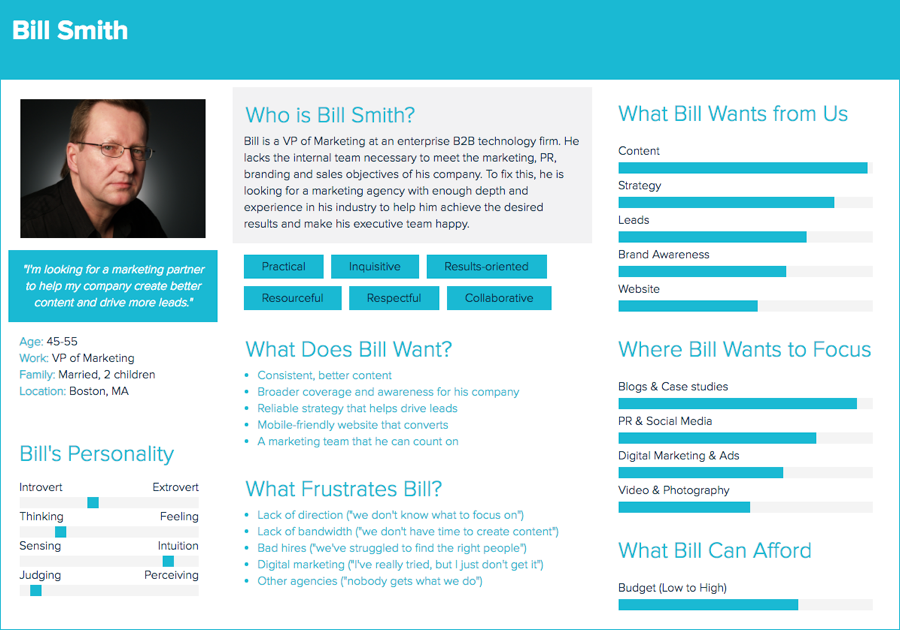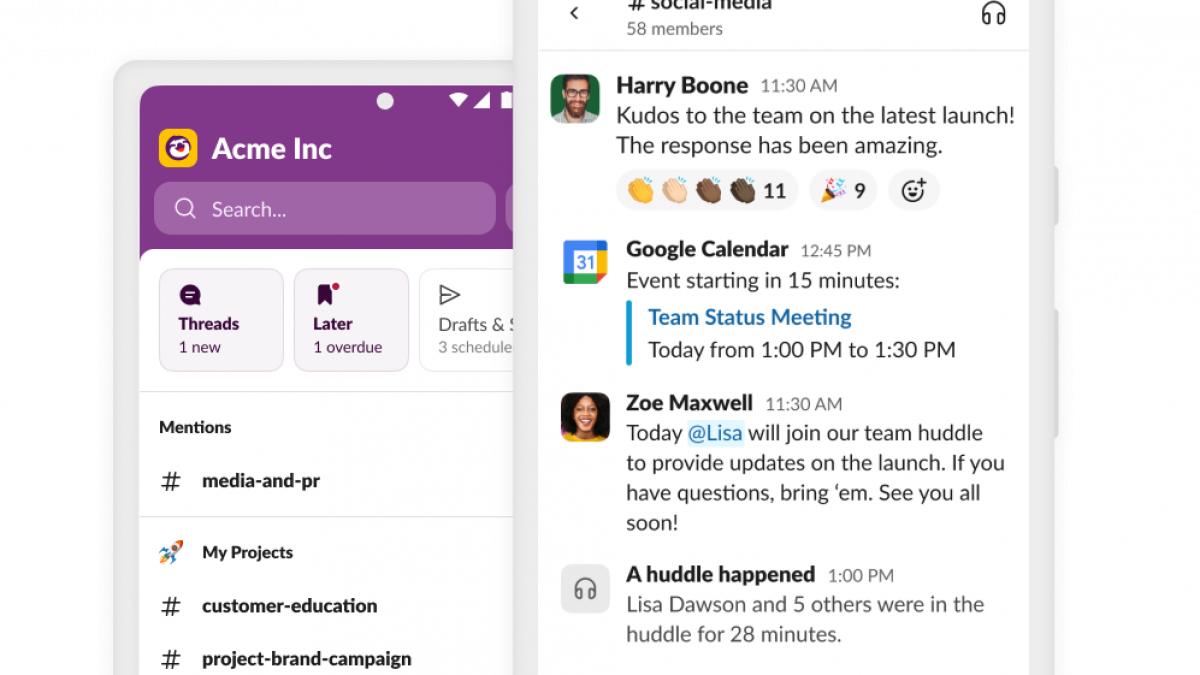Note: This blog was updated December 2024.
Is your company launching a new B2B product? Make sure you lock down a strategy that helps identify your audience, challenge assumptions and build enough buzz to hit your sales targets. In this post, we’ll break down the eight steps in how to launch a B2B product.

How to Launch a B2B Product
Step 0: Outline a Product Launch Strategy
That’s not a typo. I’m calling this Step 0 because B2B companies almost always overlook it when they’re launching a new product.
Why? The story usually goes something like this.
Company Corp., has gotten through the software development phase and arrived at a minimum viable product (“MVP,” for short). It has beta tested, validated, load tested, established proper pricing, and so on. Now, it’s eager to get the word out and make a big splash. So, it hires a B2B marketing agency to generate leads.
There’s just one problem. It wants to launch a B2B product in just one month.
As a result, everybody scrambles. The company quickly hires a sales team. The ad agency slaps together a logo and a barebones website. Finally, the product launches. And how does the market respond?
Crickets. No calls, no leads, no splash. Nothing.
So what happened? Company Corp., skipped the first – and potentially most important – step in launching a B2B product. It didn’t outline a new product launch strategy. Instead, It planned a product development strategy. It was only after Company Corp., finished developing the product that it started to think about how to go to market. By then it was too late.
The lesson: A good new product release plan makes it possible to find answers to important questions before product release. These are answers that ultimately decide what happens to your product after you launch.
While you’re still in the development phase – ideally early in the development phase – ask yourself:
- Is there a need in the marketplace for my product?
- Are there any competing products that offer similar value?
- How is my product unique?
- How will I sell my product?
- How will I get the word out, and who will I reach out to?
Last but not least, your product launch strategy should define when you want to launch, as everything from here on out will be organized around that date.
As you plan, make sure your goals are specific, measurable, attainable, relevant and time-based (SMART, for short). This framework is highly effective for defining and measuring product launch goals.
Step 1: Create Your Buyer Personas
Good product managers know exactly who their customer is, and what pains or problems their customer needs solved.
This is because they’ve created a buyer persona. Buyer personas put your target market’s behavioral and demographic characteristics and preferences into a representative model.
They also help your business avoid communicating to a client base that is too diverse with a value proposition that is too broad.
Here’s one example I created using Xtensio, a web-based tool that offers free buyer persona templates:

As you can see, it provides an overview of one type of buyer we’d like to target. It breaks down basic demographic points, industry and job title, as well as personal goals, motivators and frustrations.
How do you figure out your buyer personas? Hint: The answer isn’t “fill out a free online buyer persona tutorial.” You actually need intelligence.
That means you need to research, test and test again. That means getting your product into the hands of people who could provide constructive, honest feedback – like longtime clients.
Asking a few trusted clients to test your product can give you valuable insight on key attributes like usability, appearance and performance. But more importantly, they might tell you why it matters to them.
Apple product launches aren’t successful because it focuses on processor speed or camera updates. They’re successful because they talk about how their product will improve and enrich their customers’ lives.
Having critical information like this helps the product team build a solution they know the target market will want to pay for – because it’s solving a specific problem.
Step 2: Study the Competition
In the summer of 2011, HP released the TouchPad, a tablet device they had positioned to be an iPad-killer.
Anticipating significant demand, retail giants like Best Buy and Walmart lined up to take large orders and prepare for long lines.
Within two months, HP would abandon the product and Best Buy would be threatening to send back over 200,000 unsold devices.
So what happened?
Beyond the mediocre reviews and poor sales, this story is really about HP’s failure to study their competition, Apple.
HP didn’t fully understand what customers valued about the iPad, so they packed everything they could into the TouchPad. This made for a sluggish interface and poor user experience. Without making something better, HP couldn’t offer customers a convincing reason to give them money.
That is until they slashed prices and sold out of the remaining stock.
Granted, by this point, the damage had been done. The TouchPad was discontinued. But Google and Amazon took note of the demand for a low-cost tablet, paving the way for the Nexus 7 and Kindle Fire.
Each step matters when launching a product. Even a company like HP, with its vast resources and planning capabilities, can miss the mark if they don’t do their homework.
Step 3: Spotlight Your Differentiators
All too often, companies decide to launch a B2B product based on what they have instead of what people want.
This is due to a variety of reasons, but in business-to-business commerce it’s primarily because the people building the products are experts in development, not marketing.
For example, in an effort to one-up the competition, a product team may outfit their SaaS solution with features that improve performance, but don’t drastically differentiate their solution from that of the competition.
This would be costly.
Customers don’t want more of the same. They want better, simpler or different ways to solve specific problems.
If you’ve done your homework in Step 1, you will already know how your product compares to the competition. And you will understand what is unique about it in the eyes of your target audience.
When the cloud-based collaboration tool, Slack, launched in August 2013, their product team already knew they had something special.
This is because they originally built it for themselves.
Slack began life at founder Stuart Butterfield’s first company as an internal messaging tool his team used to make collaboration easier.
They created Slack because there wasn’t an existing solution that could solve their specific communication problems the way Slack did.
This differentiation helped Slack build and maintain momentum through launch. After only two and half years, the platform reached 1 million daily active users (or “DAUs”). Today, they have north of 12 million.
The examples go on and on. Just about every B2B product you know and love – Mailchimp, Salesforce, HubSpot, all of them – was built purposefully.
Step 4: Pick the Right Sales Model
We’ve outlined a launch strategy, created a buyer persona, studied the competition, and prioritized our differentiators.
But how are we going to actually sell this shiny new B2B product?
First, figure out which sales model makes the most sense.
- Direct
- Wholesale
- Channel
Are you selling directly to your end client? Do you need wholesalers in the chain? Or are channel partners – often called value-add resellers – best suited to help you? What kind of margins does each one provide?
For technology and software firms that are launching an enterprise B2B product, channel selling usually offers the most promise.
This is because it’s easier to partner with someone who is already servicing your target market than it is to build your own client base from nothing.
Of course, in the end, most B2B companies don’t stick to one sales model. Many of our clients will focus on channel sales out of the gate, but leverage their website to drive leads once the product gains steam.
Step 5: Create a Launch Communications Plan & Timeline
You’ve got a good business-to-business product and you know how to sell it. But you still need to tell people it’s out there. This is where a solid launch communications plan comes in.
A communications and public relations plan outlines the media and channels through which you can begin generating initial interest in your launch.
It means building relationships with journalists, social media influencers, analysts and industry events – and continuing to follow up for a good 6-12 months.
Here are five details every plan should cover:
- Reporters, influencers and bloggers like to be first. They want to be the first to tell your cool story. If you wait until launch, they won’t care. The same goes for reviews – get them ahead of time, especially technical products.
- Look out for timely opportunities or news hooks journalists can use. For example, if you’re launching a tax-related piece of software, launch it in January, just as the runup to April 15 is beginning.
- If you’re launching a SaaS product, don’t forget to provide media with a free license. If they can’t access it, they can’t test it out (and tell their followers about it).
- Figure out how your users will access your product. What’s the signup process like? Is there a free trial, or a freemium version? If it’s not running through a browser, will it work on both Mac and Windows machines? How about iOS and Android? It sounds simple, but we’ve had several traditional enterprise clients come to us having overlooked this important detail.
- Launch at a trade show for maximum impact (more on this later). For example, consider launching your pharmaceutical industry-focused software at the DIA Annual Meeting in June.
Don’t Forget Your Own Content
While influencers, journalists and bloggers will do some of the lifting, you need to create plenty of your own content, too. Tell your product’s story through website pages, blog posts and video. It can all be promoted via social media, and rounded up into series and longer-form “premium assets.” The better your B2B content marketing strategy, the better your business-to-business product launch will go.
Step 6: Soft Launch
When they decide to launch a B2B product, companies always talk about generating buzz in the short term. They want to get noticed – and quick!
But we can’t all be like Apple. Mistakes and incorrect assumptions will be made. So, time and space must be factored into every launch to allow for adjustments or even course-corrections along the way.
What makes this possible is a soft launch.
Soft launches help you iron out the kinks ahead of time, so you can make the official launch the best it can be. The goal of a soft launch should be to learn as much as you can about how the product will be received by the market. This info will help you tailor the messaging and creative you’ll need to have the impact you want.
For example, you can email your existing customer list for feedback, or create a page on the website highlighting the USPs of the product. Or you can socialize any customer testimonials you have gathered.
Doing any one of these will help you learn how to position your launch and answer questions like these:
- Is the product too complex? Do we have to educate the market?
- Do customers understand what is great about the product?
- Are we spotlighting the right selling points?
- Are we ignoring even better ones?
- Is the product making lives easier?
- Is it making lives harder?
- Does it fill a necessary absence in the market?
Soft launches don’t have to teach you anything, but nine times out of 10, they’ll identify weak points you can fix for the main event.
A Great Soft Launch Example: ChatGPT
OpenAI nailed the soft launch with ChatGPT. The content creation AI took the internet by storm when it was launched in November 2022. It became the tool du jour for content marketing, sales, children’s books … just about everything.
Critically, only after ChatGPT gained widespread acceptance (and had its kinks worked out) did OpenAI roll out paid plans. In fact, overcoming one of ChatGPT’s main problems – downtime due to high demand – became a key selling feature for ChatGPT Pro and API access. A $20/month AI tool without tons of buzz might have flopped; any number of generative AIs have in the past few years. A free AI with seemingly boundless capabilities? That took off … with revenue and investment dollars following closely. It was B2B brand building at its finest.
Step 7: Official Launch
When and where you officially launch a B2B product will influence the success of the release.
This is why so many companies time launches around trade shows. It helps generate buzz and serves as the perfect jump-start for the marketing campaign. And there’s no substitute for a good live demo.
With that in mind, here are five brief examples to make your launch even better:
- Host an event on the show floor or afterward at a nearby establishment. Invite the media and your customers. The coverage will boost interest and your customer base will feel included and involved.
- Make sure your social media channels are primed and ready to make some noise about everything you’re doing on launch day.
- Train the sales and support teams for the product launch. They must know the product inside and out.
- Keep key team members available during launch. This is crucial for troubleshooting unexpected system glitches or hiccups.
- Put together a list of basic user questions and provide all customer-facing staff with an answer sheet.
Last, but not least – follow up.
Product launches don’t happen in one day. They require nurturing and follow through – sometimes for up to six months or even a year after.
This might seem like overkill, but the reason is simple: people forget very quickly. To save your new product from dropping off the radar, you need to keep reminding people about how each feature makes life easier.
For some clients, we’ve pushed new product features every week for up to a year. In each email, we teased out something new.
Another reason this is key – SaaS products often have tons of features. If customers don’t hear from you after launch day, they won’t use 99% of those features, since they won’t know they even exist. That’s bad because features are what make your product sticky. And in this day and age, people have no problem canceling a SaaS subscription they’re not using, and churn is the enemy of a new B2B product.
Conclusion: How to Launch a B2B Product
B2B companies will hire the best developers they can find. They will research the best way to finance operations. They will hire the best IP attorney they know.
But for some reason, they assume sales and marketing do not require the same level of expertise. After all, how hard could it be, right? But it’s this kind of thinking that dooms product launches before they even begin.
If you’re not an expert but you want to launch a product successfully, you need to find the right partner. Find someone that will help you plan, implement and manage your entire B2B marketing mix. Roadblocks, details and tactics that are a part of every product launch, after all.
Are you launching a new product? Our team has decades of experience helping entrepreneurs, funded startups and established businesses turn their product launch ideas into sustainable sources of revenue. We’d love to chat. Contact us today, or call 610-421-8601 x122 to get the ball rolling.
FAQs
What is a B2B product launch?
A B2B product launch is introduction of a new product or service by a business catering to other businesses. The launch of a B2B product involves a range of activities aimed at creating awareness, generating interest and driving sales. These activities often include market research, strategic framework creation, content creation, advertising, media relations, and events like trade shows or conferences. The ultimate goal of a B2B product launch is to establish the product as a valuable solution for other businesses and drive revenue growth for the company launching the product.
What is a strategic marketing framework?
A strategic marketing framework is a systematic approach to planning, executing and evaluating marketing and product launch activities. It’s meant to provide structure and process for the creation and implementation of effective marketing strategies.
A strategic marketing framework requires a clear understanding of the target market, competitive analysis, brand positioning, messaging and content strategy, a set of marketing tactics, and goals.
How do you launch a B2B product?
A successful B2B product launch is an eight-step process. It starts with marketing strategy, persona development and competitive analysis. From there, you need to identify your product’s “killer features,” pick the right sales model and create a plan for communications and content. A soft launch is the last step before full-on launch.
What is a B2B product?
B2B products – also “business-to-business” or “B-to-B” – are products designed and sold specifically to other businesses, rather than consumers. They’re often used as inputs in the product of other goods and services, improving efficiency or enabling business-critical tasks.
Some B2B products include raw materials, components, enterprise software, computer hardware, machinery, equipment, and professional services. These products are typically more complex and specialized than B2C products, requiring more technical expertise to understand or provide.
Why do B2B product launches fail?
B2B product launches fail for several common reasons. These include a lack of proper market research, poor differentiation vs. existing solutions, insufficient resources or attention paid to marketing, ineffective messaging, bad timing, or technical issues with the product itself.




